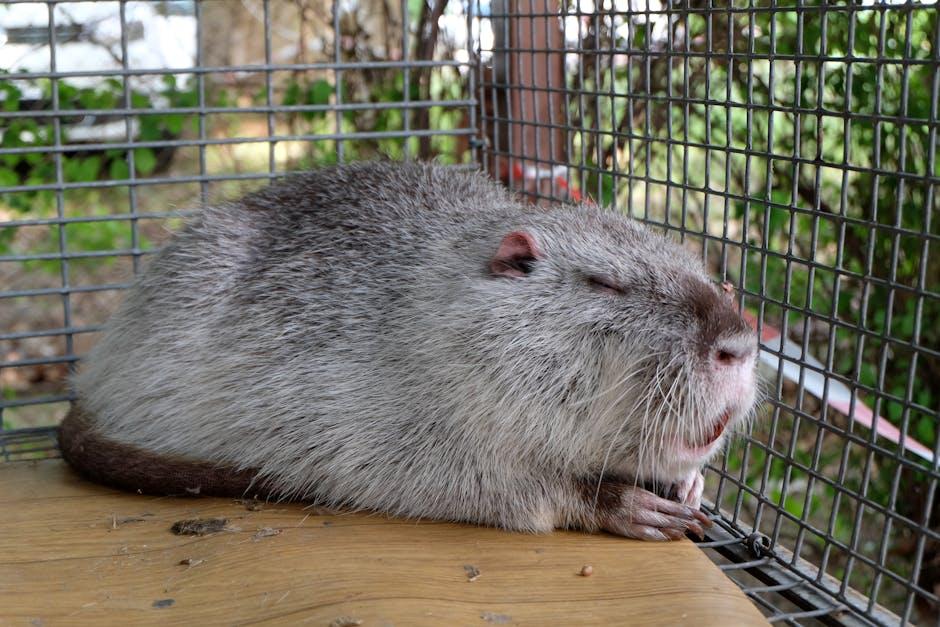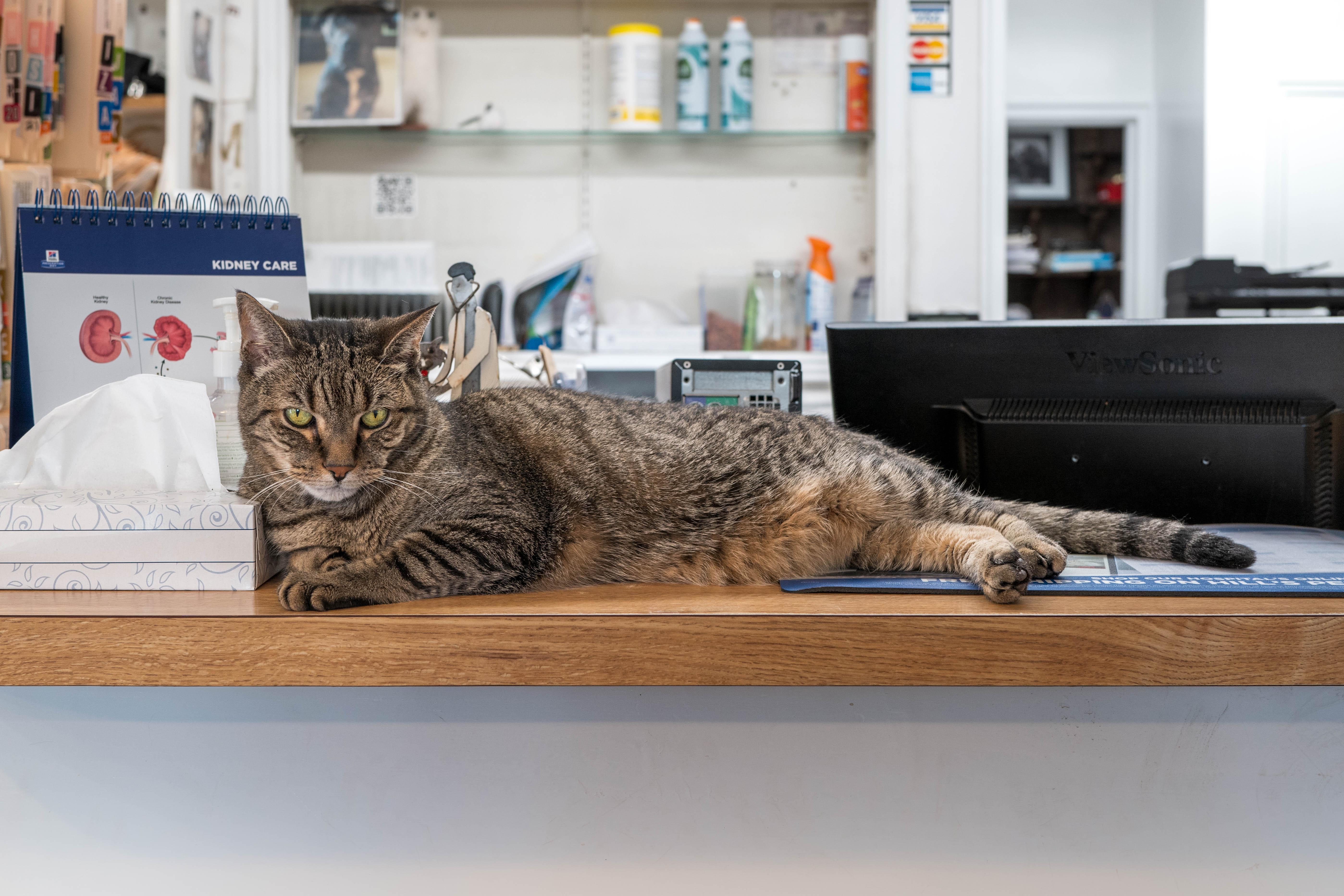For many pet owners, the term “cat cage” might evoke images of confinement or restriction. However, a well-designed cat cage can be an invaluable asset in ensuring your feline friend’s safety, comfort, and well-being. Whether it’s for travel, temporary housing, or simply creating a safe space within your home, finding the right cat cage requires thoughtful consideration and understanding of your cat’s needs. In this article, we will explore the various aspects of selecting, setting up, and utilizing a cat cage effectively, turning it into a haven for your furry companion. Join us as we delve into the essentials that will make your cat’s cage a cozy and stress-free environment.
Table of Contents
- Choosing the Perfect Cat Cage: Size, Materials, and Design
- Ensuring Comfort: Creating a Cozy Environment for Your Feline
- Safety First: Tips for Securing Your Cat’s Cage
- Easy Maintenance: Cleaning and Upkeeping Your Cat’s Space
- Q&A
- Final Thoughts

Choosing the Perfect Cat Cage: Size, Materials, and Design
Picking the perfect cat cage involves more than just choosing a comfortable space. Size, materials, and design are crucial factors that can significantly impact your feline friend’s well-being. Here’s what you need to consider:
<strong>Size Matters</strong>
<ul>
<li>Your cat cage should be 1.5 times the size of your cat to ensure ample space for movement and relaxation. A cage that is too cramped can be stressful, while one that is excessively large might not provide the sense of security cats crave. <a href="https://www.petcarerx.com/article/a-guide-to-dog-crates-and-carriers/818">[[3]]</a></li>
<li>Measuring your cat's length and height before purchasing a cage can help in selecting an appropriately sized one. Growth factors should also be considered if your cat is still young.</li>
</ul>
<strong>Choosing the Right Materials</strong>
<ul>
<li>Plastic cages are lightweight and easy to clean, but make sure they have good ventilation to avoid overheating.</li>
<li>Wire cages offer excellent airflow, but ensure the bars are close enough to prevent your cat from slipping out or getting stuck.</li>
<li>Soft-sided cages are great for travel but might not be suitable for long-term use due to durability concerns.</li>
</ul>
<strong>Design Features</strong>
<ul>
<li>Look for cages with multiple access points. This can make it easier to get your cat in and out, especially if they are skittish or nervous.</ <li>Consider the inclusion of built-in feeders or water bowls, which can be convenient during travel or if you are using the cage for extended periods.</li>
<li>Cushions or soft bedding inside the cage can enhance comfort. Opt for removable and washable materials to maintain hygiene.</li>
</ul>
<div class="wp-block-table">
<table>
<thead>
<tr>
<th>Feature</th>
<th>Consideration</th>
</tr>
</thead>
<tbody>
<tr>
<td>Size</td>
<td>1.5 times cat's size</td>
</tr>
<tr>
<td>Material</td>
<td>Plastic, Wire, Soft-sided</td>
</tr>
<tr>
<td>Design Extras</td>
<td>Multiple Access Points, Built-in Feeders</td>
</tr>
</tbody>
</table>
</div>
Ensuring Comfort: Creating a Cozy Environment for Your Feline
Transforming your cat’s cage into a cozy sanctuary starts with ensuring that it reflects a sense of comfort and security. A cozy environment not only alleviates stress but also cultivates a space where your feline can thrive. Here are some innovative ideas to help you create the purr-fect cat cage.
<p>Soft Bedding: Your cat will need a plush and inviting area to rest. Line the bottom of the cage with a soft, washable blanket or cushion. Opt for materials that are both comfortable and easy to clean. Fleece and cotton are excellent choices, as they are gentle on your cat's fur and skin.</p>
<p>Enrichment and Entertainment: Keep your feline engaged with a variety of toys and activities. Include:
<ul>
<li>Interactive toys that encourage play and mental stimulation.</li>
<li>Scratching posts to satisfy their natural scratching instincts.</li>
<li>A small ball or a bell toy for some solo playtime fun.</li>
</ul>
</p>
<p>Cozy Hideaways: Cats love to have a private nook to retreat to. Incorporate a small hideaway or tunnel inside the cage. This can be a cat cave bed or a simple cardboard box with an entrance cut out. Providing a hiding spot helps your cat feel secure and offers a refuge when they need some downtime.</p>
<table class="wp-block-table">
<thead>
<tr>
<th>Item</th>
<th>Description</th>
</tr>
</thead>
<tbody>
<tr>
<td>Soft Blanket</td>
<td>Provides warmth and comfort</td>
</tr>
<tr>
<td>Interactive Toys</td>
<td>Keeps your cat entertained and mentally stimulated</td>
</tr>
<tr>
<td>Scratching Post</td>
<td>Prevents destructive scratching and maintains claw health</td>
</tr>
<tr>
<td>Cat Hideaway</td>
<td>Offers a private, secure space to relax</td>
</tr>
</tbody>
</table>
<p>Scent Familiarization: Another key aspect is scent. Use items that carry your cat’s scent, like their favorite toy or a piece of clothing with your scent. This familiar smell can reduce anxiety and make them feel more at home in their new environment <a href="https://felinebehaviorsolutions.com/cat-introductions-101-patience/">[[1]]</a>.</p>
<p>Ambient Conditions: ensure the ambient conditions are ideal. Keep the cage in a quiet area away from heavy foot traffic or loud noises. Maintain a comfortable temperature, avoiding drafts and extreme temperatures. The goal is to create a serene, inviting space that your feline will love to spend time in.</p>Safety First: Tips for Securing Your Cat’s Cage
Ensuring your feline friend’s safety while they enjoy the great outdoors is paramount. Whether you have a sprawling catio or a compact cage, the safety measures you implement can make all the difference. Here’s how to ensure your cat’s cage is a secure sanctuary:
1. Choose the Right Location
- Avoid Direct Sunlight: Place the cage in a shaded area to prevent your cat from overheating.
- Stable Ground: Ensure the cage is on a flat surface to prevent wobbling or tipping over.
- Away from Predators: Position the cage away from places where predators or stray animals might lurk.
2. Secure the Cage’s Structure
- Regular Inspections: Routinely check for any signs of wear and tear, such as rust or loose wires.
- Lock Mechanisms: Invest in cages with reliable locking systems to prevent accidental openings.
- Reinforce Corners: Use zip ties or additional fasteners to fortify weak sections for extra stability.
3. Internal Safety Measures
- Comfortable Flooring: Line the base with a soft mat or rug to cushion the floor.
- Tethering for Harness: Install hooks or loops inside to attach your cat’s harness, providing an extra layer of security.
- Avoid Small Gaps: Ensure there are no gaps that paws or tails could get stuck in, reducing the risk of injury.
4. Environmental Enrichment
- Toys and Perches: Include a variety of cat-safe toys and perches to keep your kitty entertained and mentally stimulated.
- Water and Shade: Always provide access to fresh water and shaded areas within the enclosure to keep your cat cool and hydrated.
| Cage Feature | Importance |
|---|---|
| Sturdy Construction | Prevents escapes and enhances durability |
| Secure Locks | Keeps your cat safely confined |
| Shaded Areas | Protects from heat and sun |
| Environmental Enrichment | Keeps your cat engaged and reduces stress |
5. Emergency Preparations
- First Aid Kit: Keep a first aid kit nearby, just in case of minor injuries.
- Escape Plan: Ensure you have a plan in place if your cat manages to escape the enclosure.
- Observation: Regularly monitor your cat, especially during the first few times they use the cage, to ensure they adjust well and stay safe.
Adhering to these safety tips not only protects your feline friend but also enriches their outdoor experience, making it enjoyable for both you and your cat.
Easy Maintenance: Cleaning and Upkeeping Your Cat’s Space
Maintaining your cat’s space doesn’t have to be a hassle. With a few strategic choices, you can ensure cleanliness and comfort for your feline friend while minimizing daily chores. One effective approach is to use easily removable and washable materials in your cat’s cage. For instance, you can place a textured mat under the litter box. This will help capture stray litter, reducing the mess and making cleanup a breeze. A quick shake outside and a rinse now and then will keep the mat spotless ([1]).
It's also helpful to incorporate paper cage liners. These liners are not only easy to replace, but they also protect the cage floor from spills and stains, ensuring a consistently clean environment. Just roll up the soiled liner and replace it with a fresh one (<a href="https://www.pigeonrescue.org/faqs-2/how-to-care-for-a-rescued-pet-pigeon-for-newbies/">[3]</a>). To further streamline the process, consider using washable bedding like fleece or specially designed pet pads. These can be machine washed and reused, making them both economical and eco-friendly.
Here's a quick guide to setting up an efficient cleaning routine:
<ul>
<li>Daily: Scoop the litter box and wipe down surfaces</li>
<li>Weekly: Replace cage liners and wash bedding</li>
<li>Monthly: Deep clean the entire cage with pet-safe disinfectant</li>
</ul>
Additionally, organizing the supplies you'll need for upkeep is essential. Use a small caddy or compartment to store cleaning products, extra liners, and replacement mats. Keeping these items accessible will save you time and effort when performing routine maintenance.
<table class="wp-block-table is-style-stripes">
<thead>
<tr>
<th>Task</th>
<th>Frequency</th>
<th>Materials Needed</th>
</tr>
</thead>
<tbody>
<tr>
<td>Scooping Litter</td>
<td>Daily</td>
<td>Litter Scoop, Waste Bag</td>
</tr>
<tr>
<td>Replacing Liners</td>
<td>Weekly</td>
<td>Paper Liners, Trash Bag</td>
</tr>
<tr>
<td>Deep Cleaning</td>
<td>Monthly</td>
<td>Pet-safe Disinfectant, Cleaning Cloth</td>
</tr>
</tbody>
</table>
By staying organized and following these simple tips, you can maintain a pristine space for your cat with minimal effort. This not only ensures a healthier environment for your pet but also frees up more time for you to enjoy their company.Q&A
### Q&A: Understanding and Using Your Cat Cage Effectively
Q: What are the initial steps I should take when introducing my cat to a cage for the first time?
A: Introducing a cat to a cage can be a smooth process with patience and the right approach. Start by placing the cage in a quiet, familiar area where your cat feels safe. Leave the cage door open and place comfortable bedding, as well as some of your cat’s favorite toys and treats inside. Allow your cat to explore the cage at their own pace without forcing them inside. This process helps in creating a positive association with the cage.
Q: How can I make the cage a comfortable and appealing space for my cat?
A: Ensuring your cat’s comfort in the cage involves making it cozy and familiar. Line the cage with soft bedding and add some personal items like toys, a scratching post, or a blanket that carries your cat’s scent. Regularly clean the cage to keep it hygienic and smelling fresh. Positive reinforcement, like treats and gentle encouragement, can also help in making the cage an appealing space for your feline friend.
Q: My cat has only known life in a cage and I am now fostering it. How can I help it adapt to a more open environment?
A: Transitioning a cat that has only known life in a cage requires patience and gradual exposure to larger spaces. Start by setting up a small, quiet room where the cat can acclimate to being outside the cage. Provide hiding spots, like boxes or covered beds, to help the cat feel secure. Gradually increase the space available to the cat as it becomes more comfortable. Frequent gentle interactions and playtime can also ease this transition ([1]).
Q: Are there any health concerns to watch for when a cat spends a lot of time in a cage?
A: Cats that spend excessive time in cages can develop health issues such as obesity, muscular atrophy, and mental stress. It’s crucial to provide adequate exercise and stimulation even if the cat spends time in a cage. Monitoring for abnormal physical signs, like bumps or unusual behavior, is also important. For example, if you notice a large bump below your cat’s rib cage, it’s advisable to consult a veterinarian to rule out any serious health concerns ([2]).
Q: What are some features to consider when choosing a cage for my cat?
A: When selecting a cage for your cat, consider factors such as size, material, and ease of cleaning. The cage should be spacious enough for your cat to move comfortably. Opt for sturdy materials that are safe and non-toxic. Features like multiple doors, secure locks, and built-in feeding stations can also enhance the cage’s functionality. Ensuring that the cage is easy to clean will help maintain a healthy environment for your cat.
Q: How often should I clean my cat’s cage and what is the best way to do it?
A: Regular cleaning of your cat’s cage is essential to maintain hygiene and prevent odor. At a minimum, the cage should be cleaned thoroughly once a week. Daily maintenance, such as removing waste and replacing soiled bedding, can also help keep the cage clean. Use pet-safe cleaning products and ensure the cage is thoroughly dried before placing your cat back inside. Regularly check and clean any accessories like trays, dishes, and toys.
By following these guidelines, you can ensure your cat’s cage is a safe, comfortable, and engaging space for your feline friend.
Final Thoughts
As we bring this journey through the world of cat cages to a close, we hope you’ve found valuable insights and inspiration. Whether your intention is to provide a sanctuary for your feline friend, ensure their safety during travel, or simply offer them a cozy retreat, the perfect cat cage is out there waiting for you. Remember, a well-chosen cat cage is more than just a practical necessity – it’s a space where your cat can feel secure and loved. Thank you for joining us, and here’s to creating a happier, healthier environment for your beloved pet. Until next time, may your home be filled with purrs and contentment.
For more tips and advice on caring for your cat, don’t forget to explore our other articles. Happy pet parenting!







0 Comments